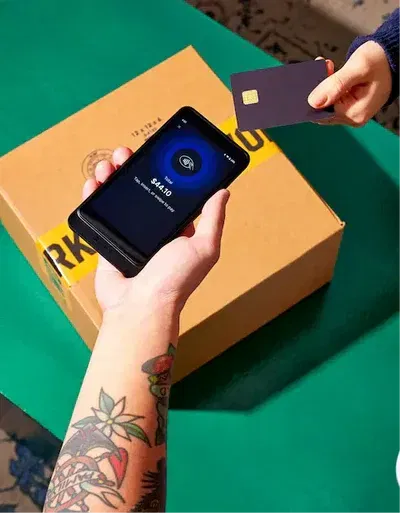15 Simple Page Layouts Examples That Inspire Clean Web Design
Introduction: The Simplicity Behind Powerful Website Layouts
Let me ask you something—have you ever landed on a website and immediately felt overwhelmed, lost, or just plain unimpressed? That’s probably because the website layout design didn’t work. In contrast, the best websites are often those with simple page layouts that communicate clearly, look clean, and function seamlessly.
Whether you’re designing a portfolio, online store, blog, or corporate site, a well-thought-out layout can make or break your user’s experience. The good news? You don’t need to be a designer to appreciate or implement good structure. In this article, I’ll walk you through a variety of simple page layout examples that are as practical as they are visually appealing. You’ll get real-world inspiration and actionable ideas to build your next standout site.
Ready to design smarter, not harder? Let’s get started.
| Layout Type | Best For | Strengths | Potential Challenges | Real-World Example |
|---|---|---|---|---|
| Single Column | Blogs, mobile-first pages, reading-focused content | Easy to read, ideal for storytelling, works great on all devices | Can feel too basic or lack visual appeal if not styled well | Medium.com |
| F-Layout | News sites, information-heavy pages | Mimics natural eye movement, highlights key content areas | Needs consistent content structure to be effective | CNN.com, BBC |
| Z-Layout | Landing pages, CTAs, promotional offers | Guides user naturally to conversion points (e.g., signups, buttons) | Limited flexibility for complex content | Unbounce, Basecamp |
| Grid Layout | Portfolios, e-commerce, photo galleries | Neat, modular organization, responsive and scalable | Can feel repetitive if overused; requires good spacing | Behance.net, Etsy |
| Split Screen | Sites needing dual options (e.g., choose your path) | Visually striking, ideal for comparisons or entry-point selection | Not always ideal for mobile unless properly optimized | Adidas.com homepage |
| Asymmetrical | Creative agencies, fashion brands | Bold, modern feel; creates visual intrigue | Risky if not balanced—can confuse or overwhelm users | Awwwards.com winners |
| Card-Based | Content-heavy portals, dashboards | Highly modular, ideal for sorting/filtering content | May require performance optimization with many dynamic elements | Pinterest, Trello |
| Magazine | Online publications, blogs | Supports diverse content types—text, video, images | Can become cluttered; needs tight design control | Wired.com, National Geographic |
| Hero + CTA | Homepages, sales pages | Grabs attention immediately, encourages immediate action | Needs compelling visuals and clear message | Apple.com product pages |
| Sidebar Layout | Content + navigation-heavy websites | Keeps nav always visible, great for documentation | Less mobile-friendly unless collapsible | Wikipedia, WebMD |
| Full-Screen Image | Photography or product showcase sites | High visual impact, good for storytelling via imagery | Needs excellent image quality; slow load times without optimization | Airbnb (listing pages) |
| Modular Layout | SaaS products, customizable content | Adaptable, component-based for flexibility | Requires thoughtful UI/UX strategy | Notion.so |
| Sticky Header Layout | Sites with long scrollable content | Persistent navigation; improves usability | Takes up vertical space—bad for mobile if not optimized | Shopify, Slack |
| Centered Content | Simple portfolios, single-product sites | Focuses attention on a single element or message | Not suitable for content-heavy pages | Basecamp feature page |
| Timeline Layout | History, project journeys, storytelling | Chronological navigation, visually engaging | Limited utility outside sequential content | Facebook Timeline |
Why Simple Page Layouts Are the Secret Sauce
Before we dive into actual website layout examples, it’s worth asking—why does simplicity matter?
- Faster Load Times: Fewer design elements mean quicker performance.
- Better User Experience: Clear paths mean less confusion.
- Higher Conversion Rates: Direct messaging leads users to take action.
- Mobile Optimization: Simple layouts adapt better to small screens.
- Easier Maintenance: Less clutter means less time spent updating content.
A simple layout isn’t just minimal—it’s intentional. It focuses on clarity and purpose, helping visitors focus on what matters.
Types of Website Page Layouts (With Examples)
Let’s break down the most common types of web layout design and explore layout site examples that follow these models:
1. Single Column Layout
- Ideal for mobile-first sites and minimalist blogs.
- Focuses user attention on content.
Example: Medium.com articles—clean, readable, and distraction-free.
2. F-Layout
- Mimics how people read: left to right, top to bottom.
- Places the most important elements along the F pattern.
Example: News websites like CNN or BBC.
3. Z-Layout
- Great for sites with a clear call-to-action.
- Creates natural scanning flow for eyes.
Example: Simple landing pages with hero images and CTA buttons.
4. Grid Layout
- Organizes content into a neat grid.
- Excellent for e-commerce and portfolios.
Example: Behance portfolio pages.
5. Split Screen Layout
- Divides the screen into two distinct sections.
- Lets users choose a path or compare options.
Example: A/B option pages or gender-specific e-commerce entrances.
6. Asymmetrical Layout
- Visually interesting while still functional.
- Balances large and small elements.
Example: Creative agencies or fashion brands.
7. Card-Based Layout
- Organizes content in bite-sized pieces.
- Excellent for content-heavy pages.
Example: Pinterest, Trello boards.
8. Magazine Layout
- Multiple content blocks and images.
- Ideal for media sites and blogs.
Example: Wired.com or National Geographic.
Table: Simple Page Layouts Examples vs. Use Cases
| Layout Type | Best For | Key Feature | Example Site |
|---|---|---|---|
| Single Column | Blogs, storytelling | Scroll-focused content | Medium.com |
| F-Layout | News, informational sites | Natural reading pattern | CNN.com |
| Z-Layout | Landing pages | Directional flow to CTA | Unbounce.com |
| Grid Layout | Portfolios, eCommerce | Uniform block presentation | Behance.net |
| Split Screen | Choices or comparisons | Dual interaction sections | Adidas.com |
| Asymmetrical | Design-heavy sites | Dynamic visual interest | Awwwards.com |
| Card-Based | Content aggregators | Modular information blocks | Pinterest.com |
| Magazine | Articles, blogs, media | Rich text + images | Wired.com |
Page Layout Design Tips to Keep It Simple but Effective
Here’s how to make your page layout design stand out without going overboard:
- Use a Grid: Consistency is key—grids keep everything aligned.
- Limit Color Palette: Stick to 2-3 colors for cohesion.
- Whitespace Matters: Give your content room to breathe.
- Clear Hierarchy: Use typography to establish order.
- Mobile First: Start small, then scale up.
- Use Visual Anchors: Icons, arrows, and photos guide the user’s eye.
- Avoid Clutter: Less is more, always.
Cool Layouts for Websites That Still Keep It Simple
Here are a few cool site layouts that merge creativity with simplicity:
- Apple’s Product Pages – Clean images, bold typography.
- Dropbox’s Homepage – Plenty of whitespace and a focused message.
- Slack – Uses card layouts and clean typography to explain features.
- Basecamp – Straightforward Z-pattern with clever copy.
- Notion – Minimal interface but tons of hidden functionality.
Insert an image of Notion’s minimalist interface with modular sections
Website Layout Ideas by Industry
Need layout inspiration tailored to your niche? Here are layout ideas that work per vertical:
- eCommerce: Grid layout with large product images + filters.
- Portfolio: Card layout or full-width image gallery.
- Corporate: F-layout or Z-layout with team bios and service highlights.
- Blogs: Magazine layout with sticky sidebars.
- SaaS: Z-pattern with bold CTAs and feature highlights.
How to Create Web Page Layout From Scratch (Step-by-Step)
Creating your own web page layout doesn’t have to be intimidating:
- Choose a Goal: What’s the purpose of the page?
- Sketch a Wireframe: Use paper, Figma, or a layout tool.
- Pick a Grid System: 12-column grids work well.
- Add Visual Hierarchy: Headings, subheadings, and icons.
- Decide Content Placement: Main content, nav, sidebar, footer.
- Test Responsiveness: Make sure it works on all devices.
- Get Feedback: Ask real users what they think.
Common Mistakes in Web Layout Design (And How to Avoid Them)
- Too Many Fonts: Stick to two max.
- Ignoring Mobile: Always design mobile-first.
- No Clear CTA: Tell the user what to do next.
- Busy Backgrounds: Keep it clean for readability.
- Inconsistent Spacing: Use your grid to space properly.
1. What are simple page layouts and why are they important in website design?
Simple page layouts refer to clean, uncluttered, and intuitive designs that make a website easy to navigate and understand. These layouts emphasize clarity over complexity, often using minimal elements, clear hierarchy, and responsive grids. Whether you’re designing a personal blog or an eCommerce store, a simple website layout design improves load speed, enhances user experience, and leads to higher engagement and conversions. Think of it like a well-organized store—you instantly know where everything is, and you enjoy the shopping experience. Clean layouts ensure visitors stay longer and interact more with your content.
2. Can you give some examples of a web page layout that work for modern websites?
Absolutely. Here are a few examples of a web page layout that are widely used today:
-
F-Layout: Great for blogs and news websites where users scan in an F-shaped pattern.
-
Z-Layout: Ideal for landing pages with a CTA at the bottom-right.
-
Grid Layout: Perfect for portfolios, galleries, and product listings.
-
Split Screen Layout: Works well for homepages offering two user paths (e.g., men/women).
-
Card Layout: Great for aggregating lots of small content pieces like articles or features.
These web layout examples combine aesthetic appeal with usability, and they adapt well to both desktop and mobile screens.
3. What are the best website layouts for improving user engagement?
The best website layouts for engagement are those that guide users naturally through content. Here are a few highly effective types:
-
Hero Layout with CTA: Immediately presents value and encourages action.
-
Single Column Layout: Ideal for mobile-first, reading-focused pages like blogs.
-
Modular/Grid Layout: Allows users to digest content in chunks (perfect for eCommerce and SaaS).
-
Timeline Layout: Great for storytelling, like company history or product journeys.
User engagement increases when the page layout design aligns with user expectations, loads quickly, and offers intuitive navigation.
4. How can I choose the right layout for my website page?
When deciding on a website page layout, ask yourself:
-
What is the main goal of this page (inform, sell, convert)?
-
Who is my audience, and how do they interact with web content?
-
Will the layout work well on mobile and desktop?
-
Does it allow for visual hierarchy and easy scanning?
For content-heavy pages, go with F-layouts or magazine styles. For action-driven pages, try Z-layouts or single CTA layouts. For portfolios, a card-based or grid layout is often best. Choose a layout site structure that puts your message front and center while keeping things simple.
5. What’s the difference between a layout site and a theme?
Great question! A layout site refers to the structural organization of elements on a single page—like headers, footers, columns, and content blocks. A theme, on the other hand, is a collection of styles (fonts, colors, and layouts) applied across a website. In simpler terms: a theme is the house’s decor, while the layout is the floor plan.
A layout affects user flow and content delivery, while a theme affects the brand feel. For example, your homepage might use a Z-layout, while your theme ensures it matches your brand’s look.
6. Are there any tools to help design simple page layouts for websites?
Yes! There are many user-friendly tools available to help you design and visualize website layout design examples before building them:
-
Figma: Perfect for prototyping web layout design with collaborative features.
-
Adobe XD: Great for visualizing both static and interactive layouts.
-
Sketch: Popular with UI/UX designers for layout and interface creation.
-
Canva: Ideal for beginners looking to mock up a basic website layout idea.
-
WordPress or Wix page builders: Offer drag-and-drop interfaces for testing layout structures.
These tools let you experiment with page layout examples and optimize them for your audience before going live.
7. How can I create web page layout from scratch if I’m not a designer?
You don’t have to be a design wizard to create a clean web page layout. Here’s how you can do it in seven steps:
-
Define your page’s goal (e.g., sign-ups, sales, info).
-
Choose a layout type (e.g., grid, F-pattern, Z-pattern).
-
Sketch it out using a layout builder tool or even pen and paper.
-
Focus on hierarchy—use headings, subheadings, and CTAs.
-
Add whitespace for balance and clarity.
-
Test your layout on mobile and desktop.
-
Gather user feedback and adjust accordingly.
Start with layout site examples online and tailor them to your content and brand.
8. What are some page layout design ideas for small businesses?
If you run a small business, your page layout design ideas should be tailored to communicate value fast. Here are a few tried-and-true layouts:
-
Z-Layout for Homepages: Logo > Offer > CTA.
-
Single Column Services Page: Clear benefits, testimonials, pricing.
-
Grid Layout for Products or Services: Highlights diversity and organization.
-
Card-Based Blog Section: Boosts SEO and content visibility.
Keep it clean, concise, and conversion-focused. Use sample web layout templates from competitors and improve upon them.
9. What’s the role of color and typography in a simple layout web page design?
Color and typography play a huge role in shaping the perception of a layout web page design. While the layout sets the structure, the design elements bring it to life. Stick to a limited color palette (2–3 main colors) to avoid visual noise. Use typography to guide the eye:
-
Big bold headlines: Capture attention.
-
Readable body fonts: Enhance clarity.
-
Consistent styles: Support branding.
Think of typography as your voice and color as the mood in your website layout ideas.
10. What are some cool layouts for websites that still remain simple and effective?
If you’re looking for cool layouts for websites, consider these visually striking yet user-friendly formats:
-
Full-screen hero image with headline and CTA
-
Split screen with a visual on one side and text on the other
-
Masonry grid for blogs or portfolios
-
Interactive cards with hover effects
-
Minimalist timeline layout for storytelling
These cool site layouts maintain simplicity while adding creative flair—proving that simple doesn’t mean boring.
11. How can I test if my website layout is working?
You can measure the success of your website page layout using both qualitative and quantitative methods:
-
Heatmaps (via tools like Hotjar or Crazy Egg): See where users click.
-
Session recordings: Watch real users interact with your page.
-
Google Analytics: Monitor bounce rate, time on page, and goal conversions.
-
User testing: Get real feedback from target users.
If users are confused or bouncing quickly, your page layout design might need adjustments.
12. What’s the best page layout for a portfolio website?
For portfolios, your goal is to present work clearly and professionally. The best page layout examples for portfolios include:
-
Grid Layout: Display thumbnails of projects.
-
Card-Based Layout: Offers quick descriptions and links.
-
Single Page Layout: Great for minimal personal branding.
-
Tabbed Layout: Separate work into categories.
These sample website layout options help users explore your work without feeling overwhelmed.
13. Are there free templates for page layout web designs I can use?
Yes! You can find plenty of page layout web templates online—both free and premium. Try these platforms:
-
ThemeForest: Offers quality layout templates.
-
Webflow: Interactive drag-and-drop builder with free templates.
-
Figma Community: Free wireframes and layout kits.
-
Canva: Simple layout mockups for beginners.
-
BootstrapMade: Responsive templates using the Bootstrap framework.
Using a sample web layout can save time and serve as a great starting point for your project.
14. What are some web design layout examples I can learn from?
Here are a few excellent web design layout examples from top brands:
-
Apple.com – Hero layout, product-focused, clean typography.
-
Airbnb.com – Modular layout with large visuals.
-
Dropbox.com – Z-pattern with clear messaging and CTAs.
-
Notion.so – Minimalist layout with expandable content.
-
Spotify.com – Bold visuals, responsive cards.
Each of these examples offers insight into how website layout design examples can be both beautiful and functional.
15. How can I improve my current layout to match modern design standards?
If your current site layout design feels outdated, try these tips:
-
Simplify navigation: Cut down to 5–7 main menu items.
-
Use whitespace: Make content easier to read.
-
Update typography: Use modern, web-safe fonts.
-
Improve mobile responsiveness: Test layouts on all devices.
-
Use layout trends: Add modular cards, sticky headers, or CTAs.
Start with one page, such as your homepage or a landing page, and apply modern page layout design ideas iteratively.
Conclusion: Simple Page Layouts That Actually Work
The most beautiful and effective websites are often the ones with the least noise. As you’ve seen in these simple page layouts examples, clarity beats clutter. Whether you’re creating a sleek landing page, a clean blog, or a focused eCommerce experience, using one of these layout strategies can transform how users experience your content.
Don’t overthink it. Pick a layout that serves your goals, keeps the user journey in mind, and is easy to navigate.
What’s your favorite layout style? Drop your ideas or layout wins in the comments—we’d love to hear what’s worked for you!
Link Acquisition Strategy – How to Build Powerful Backlinks for SEO




